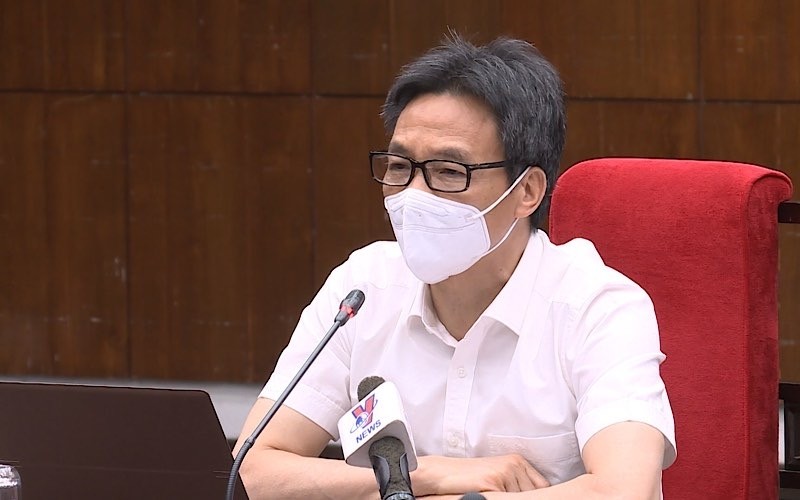>>> Around 5,000 COVID-19 patients discharged from Ho Chi Minh City’s No. 1 Field Hospital
>>> More support heads to COVID-19-hit southern localities
>>> All medical resources must be mobilised to fight COVID-19 in HCM City: Deputy PM
Dam, who is also Head of the National Steering Committee for COVID-19 Prevention and Control, chaired a teleconference on July 28 with 19 southern provinces and cities on the prevention and control of the epidemic.
Hailing the efforts of the local authorities and people in realising requirements set in the Prime Minister’s Directive 16/CT-TTg on applying wide scale social distancing in such localities, Dam said that they have done a huge amount of work, with outbreaks in some locales basically under control, but the situation is still very complicated.
In Ho Chi Minh City, Dong Nai, Binh Duong and Long An, the suppression of the epidemic in these localities will take longer than expected, Dam noted, adding that the epidemic situation in Ho Chi Minh City is different from the rest of the provinces and cities in the region and the whole country.
He urged the southern provinces and cities to facilitate the circulation and distribution of essential goods to each citizen, while developing effective and practical policies to support local people in ensuring essential needs.
In areas implementing Directive 16, it is necessary to organise a thick and well-functioning community health monitoring and management system, he suggested, adding that local forces should closely monitor the health of each family and each at-risk object so that any suspected symptoms related to COVID-19 and other diseases are reported for prompt medical assistance.
On the morning of the same day, Dam inspected the pandemic prevention and control of at field hospitals No. 2 and No. 9, as well as working with provincial leaders of Long An and medical staff from the Ministry of Health working in the province.
The deputy PM asked Long An to strictly implement Directive 16/CT-TTg and further promote the community-based COVID-19 task force in monitoring entries to the locale without declaring health status, as well as closely monitoring crowded motels.
 |
Deputy Prime Minister Vu Duc Dam (far right) works with Long An leaders on COVID-19 prevention and control on July 28, 2021. (Photo: VNA)
He also asked Long An to continue to support Ho Chi Minh City in providing agricultural goods to deliver to people in blockaded areas as well as meals for those in isolation areas and forces on duty.
At a meeting on COVID-19 Prevention and Control on the same day, Chairman of the Hanoi People's Committee Chu Ngoc Anh asked the local authorities to closely coordinate with the police force in operating more checkpoints and strengthen inspection on the compliance with disease prevention regulations.
Anh has signed a decision on rewarding 22 collectives, including officers, soldiers and people working at checkpoints across the capital city, for their outstanding achievements in the prevention and control of the epidemic.
As of 4 pm on July 27, Ho Chi Minh City has injected nearly 300,000 people against COVID-19, of which nearly 30,000 people are over 65 years old.
Deputy Secretary Phan Van Mai of the Ho Chi Minh City Party Committee noted that the current top task in the city's epidemic prevention and control is treatment, as the city will promote health care for COVID-19 infections without symptoms and with mild symptoms to help them improve their health and strengthen their resistance.
The city has deployed an online consultation network and also mobilised private hospitals to participate in the care and treatment of COVID-19 patients, while also establishing more field hospitals for the timely reception of patients and better provision of care.
















